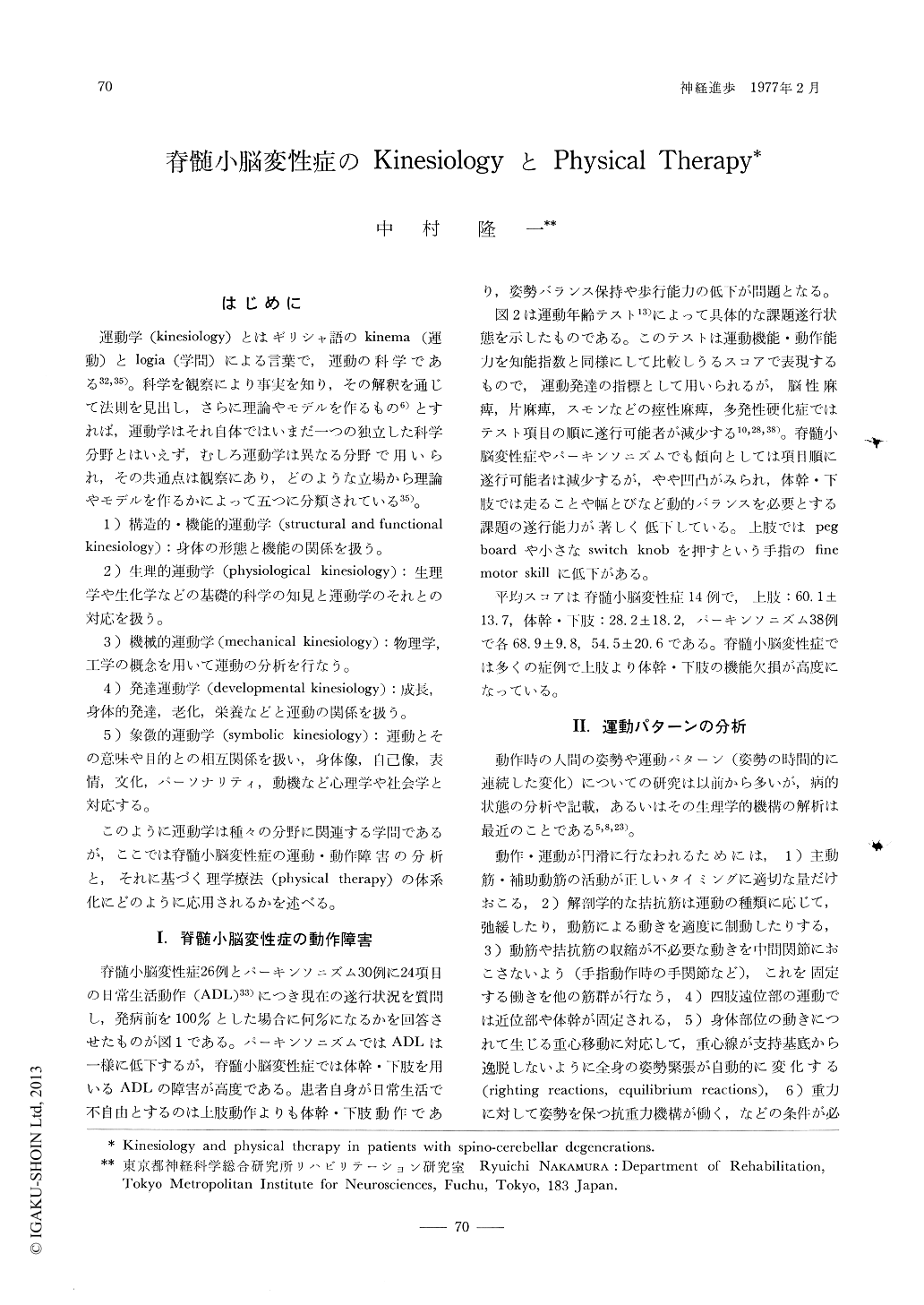Japanese
English
- 有料閲覧
- Abstract 文献概要
- 1ページ目 Look Inside
- サイト内被引用 Cited by
はじめに
運動学(kinesiology)とはギリシャ語のkinema(運動)とlogia(学問)による言葉で,運動の科学である32,35)。科学を観察により事実を知り,その解釈を通じて法則を見出し,さらに理論やモデルを作るもの6)とすれば,運動学はそれ自体ではいまだ一つの独立した科学分野とはいえず,むしろ運動学は異なる分野で用いられ,その共通点は観察にあり,どのような立場から理論やモデルを作るかによって五つに分類されている35)。 1)構造的・機能的運動学(structural and functional kinesiology):身体の形態と機能の関係を扱う。2)生理的運動学(physiological kinesiology):生理学や生化学などの基礎的科学の知見と運動学のそれとの対応を扱う。3)機械的運動学(mechanical kinesiology):物理学,工学の概念を用いて運動の分析を行なう。4)発達運動学(developmental kinesiology):成長,身体的発達,老化,栄養などと運動の関係を扱う。5)象徴的運動学(symbolic kinesiology):運動とその意味や目的との相互関係を扱い,身体像,自己像,表情,文化,パーソナリティ,動機など心理学や社会学と対応する。
Several fields of kinesiology, which are divided into structural and functional, mechanical, physio-logical, developmental, and symbolic kinesiology, were applied to the analysis and the treatment of disorders of movements and motions in patients with spino-cerebellar degenerations.
1. Both patients' disabilities evaluated by a questionaire method and patients' functional deficits assessed by motor age test showed severer motor handicaps in tasks performed by trunk and legs than those performed by arms.

Copyright © 1977, Igaku-Shoin Ltd. All rights reserved.


